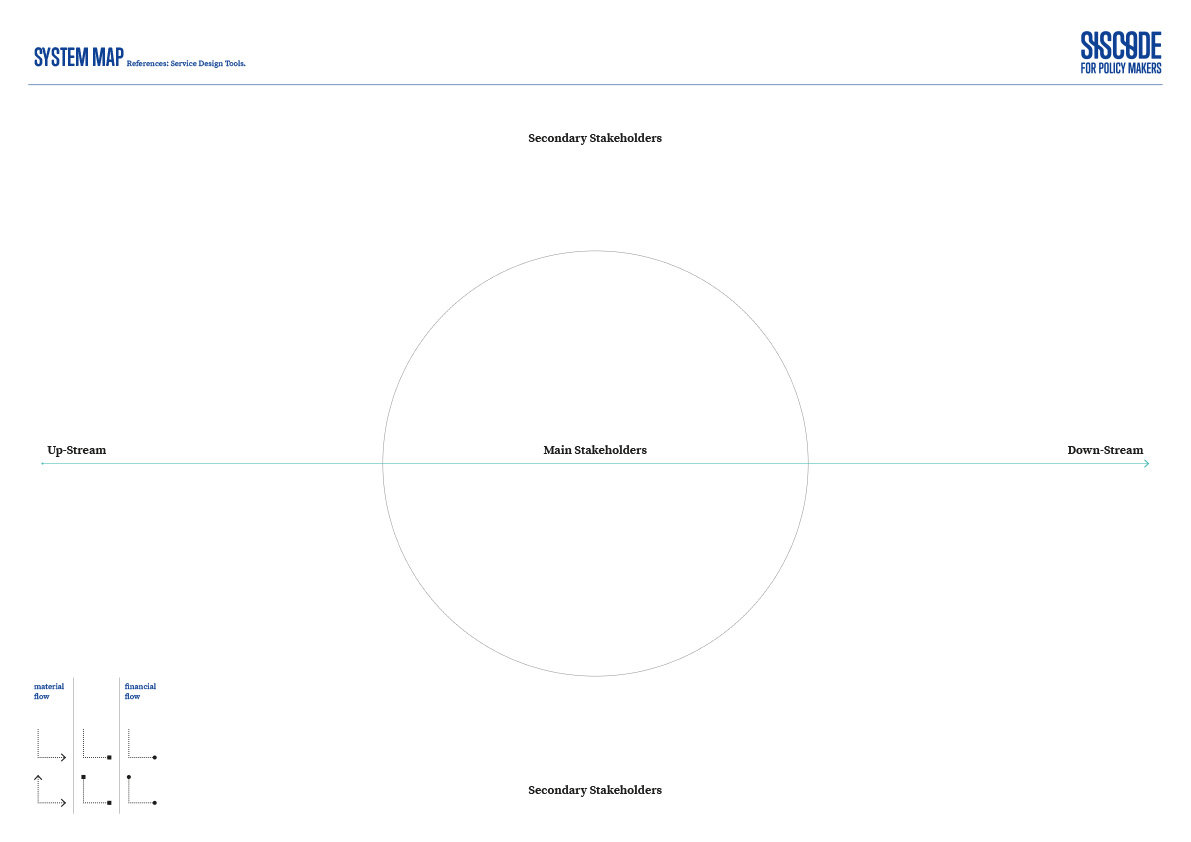Complexity: High
Time required: 3-4 hours
Material required: pens, post-its, poster paper, colored markers, sketching technology, computer, printer, glue/tape
Other: The activity is better done in a group of members coming from all of the areas of activity.
References: Service Design Tools, servicedesigntools.org
What is it for?
The system map is a visual representation of the system behind the innovation, whether it be a service or a product. It allows you to take on a systemic view of the solution and see connections between the different actors that might otherwise not have been perceived. It also maps out the flow of materials, energy, information and money throughout the system. This allows you to understand where possible opportunities might lie to increase value, efficiency and/or efficacy.
How to use it?
The system map is a complex process but when broken down is quite simple if you follow the steps below:
- Using post-it notes, jot down the main actors/stakeholders (e.g. users, clients, front-end staff, etc.) of the system and put them in the center of the template. Do the same for secondary stakeholders (e.g. suppliers, partners, etc.) and place them in the outer ring.
- Choose and assign icons for each stakeholder. You can find these online in free databases or you can sketch them yourselves or use digital sketching technology. Try to include three elements for each actor: a structure to represent the actor (e.g. local shop, town hall, association, industrial company, etc.) which should be standard for all actors (i.e. if you have more than one town hall involved, the structure icon for town hall remains the same while the output and title will/could change); a defining characteristic of the actor’s output (e.g. transporting goods, producing goods, delivering services, etc.) and a title (e.g. logistic provider, local shop, etc.). Main stakeholders should be big and secondary ones smaller.
- Now, create arrow types for the different material, energy, information and money flows throughout the system.
For example: - Now you’re ready to complete your system map! Arrange
the actors in their circles and describe what activities, processes and exchanges are occurring to make the solution work.


